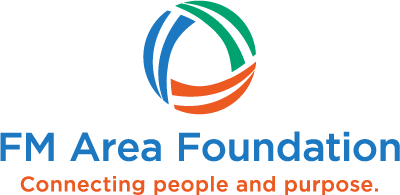If you’ve been involved with charitable giving for a few years, you’ve no doubt become familiar with both private foundations and donor-advised funds and their popularity as charitable giving tools. As is often the case with tax and estate planning-related topics, the differences between private foundations and donor-advised funds are sometimes the subject of confusion and misunderstanding.
As you work with your advisors and the team at the FM Area Foundation to establish your immediate and long-term charitable giving plans, take a few minutes to check out how to debunk these three common myths.
Myth #1: Donor advised funds are all the same, and only private foundations can be customized
Private foundations will always differ from donor-advised funds in important ways not only because of their status as separate legal entities and the deductibility rules for gifts to these entities, but also because of the opportunities to customize governance. But it is a mistake to think that a donor-advised fund is a cookie cutter vehicle. Indeed, “donor-advised fund” is simply a term used to specify the structure of a fund and its relationship with a sponsoring organization such as a community foundation. The donor-advised fund vehicle itself is extremely flexible.
–Donor-advised funds are popular because they allow a donor to make a tax-deductible transfer of cash or marketable securities that is immediately eligible for a charitable deduction. The donor can recommend gifts to favorite charities from the fund when the time is right.
–A donor-advised fund at the FM Area Foundation is frequently a more effective choice than a donor-advised fund offered through a brokerage firm (such as Fidelity or Schwab). That’s because, at the FM Area Foundation, you and your family are part of a community of giving and have opportunities to collaborate with other donors with similar interests.
–The FM Area Foundation can work with you and your family on a charitable giving plan that extends for multiple future generations. That is because the team at the FM Area Foundation supports your family in strategic grant making, family philanthropy, and opportunities to gain deep knowledge about local issues and nonprofits making a difference.
As you explore the many opportunities to deepen your work with the FM Area Foundation, consider the unique mix of flexibility and services available to you and your family when you establish a donor-advised fund.
Myth #2: Deciding whether to establish a donor-advised fund or a private foundation mostly depends on the size
The size of a donor-advised fund, like the size of a private foundation, is unlimited. The United States’ largest private foundations are valued well into the billions of dollars. (Information about private foundations, ironically, is not so private. The Internal Revenue Service provides public access to Form 990 tax returns for private foundations. That is not the case for individual donor-advised funds.)
Similarly, donor-advised funds are not subject to an upper limit. Although the information on the asset size of individual donor-advised funds is not publicly available, anecdotal information indicates that some donor-advised funds’ assets may total in the billions of dollars.
Indeed, a donor-advised fund of any size can be an effective alternative to a private foundation, thanks to fewer expenses to establish and maintain, maximum tax benefits (higher deductibility limitations and fair market valuation for contributing hard-to-value assets), no excise taxes, and confidentiality (including the ability to grant anonymously to charities).
The net-net here is that the decision whether to establish a donor-advised fund or a private foundation–or both–is much less of a function of size than it is other factors that are more closely tied to the objectives a donor is trying to achieve.
Myth #3: Donor-advised funds and private foundations are mutually exclusive
Many philanthropists and their advisors are aware of the many benefits of using both a donor-advised fund and a private foundation to accomplish their charitable goals. For example:
–Donor-advised funds can help meet the need for anonymity in specific grants, which is typically tricky using a private foundation.
–A donor-advised fund can receive a family’s gifts of highly-appreciated, nonmarketable assets such as closely-held stock and real estate and benefit from favorable tax deduction rules not available for gifts to a private foundation.
–An integrated donor-advised fund and private foundation approach can help a family balance and diversify its investment and distribution strategies to ensure that giving to important causes remains steady even in market downturns.
Some private foundations are even considering transferring their assets to a donor-advised fund at the FM Area Foundation to carry on the foundation’s mission. However, terminating a private foundation and consolidating giving through a donor-advised fund is sometimes the best alternative for a family when the day-to-day management and administration of the private foundation has become more time-consuming than expected and is taking time and focus away from nonprofits, the community, and making grants. In addition, some families find that the tax rules related to investments, distributions, and “self-dealing” have become harder to navigate and may even prevent the family from maximizing the tax benefits of charitable giving. Finally, the administrative load of managing a private foundation sometimes becomes overwhelming, especially if the family members who handled these functions initially have retired, passed away, or become busy with other projects.
“





